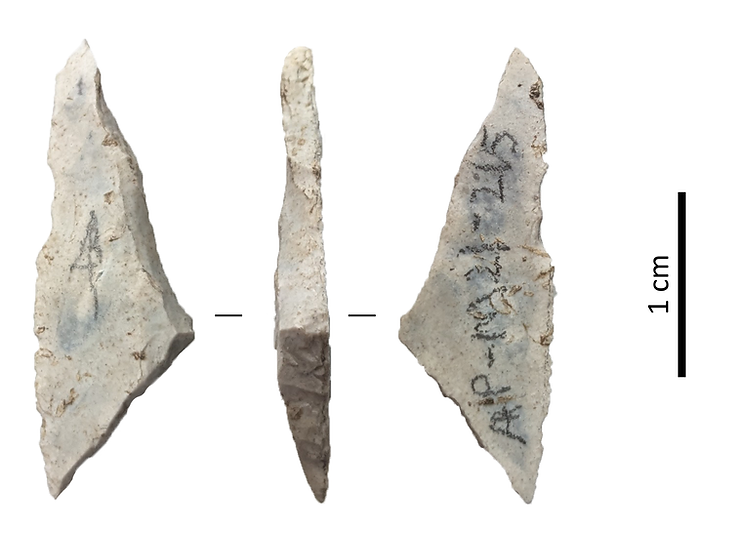The Full Story
The Mesolithic
The Mesolithic period, or Middle Stone Age, marks the transitional era between the Palaeolithic and Neolithic, roughly spanning from ca. 9000 to 5,000/4500 BCE in Western Europe.
The end of the Ice Ages
Between 60ka (thousands of years) and 50 ka ago, during the last Ice Age, AMHs (Ancient Modern Humans or Homo sapiens sapiens) ventured into the area we now call Europe. At that time, Neanderthals still lived throughout. Dates obtained on Neanderthal fossils suggest that there were no more Neanderthals in Belgium when AMHs arrived – possibly around 36ka ago, but evidence for the first AMHs in Belgium is scarce. Following this, the initial AMHs that arrived in our regions probably moved to Southern Europe at the onset of the extremely cold Last Glacial Maximum (LGM 25ka – 19ka years ago), as suggested by the recent mtDNA genetic study of the few Belgian skeletal remains that occur (from the Goyet cave in Gesves, Namur).

After this cold interval, during the Late Glacial (15ka-12ka ago) temperatures gradually started to rise, melting the glaciers and ice sheets, causing an increase in sea level and the expansion of woodlands. Triggered by these milder climatic conditions Late/Final Palaeolithic hunter-gatherers left their refugia in SW Europe, and gradually started to move back North which had become permafrost and ice-free. From the start of the Holocene and the Mesolithic, the climate and the environment had stabilized. Nonetheless, Mesolithic hunter-gatherers still faced smaller-scale environmental challenges, such as rapid sea level rise, increased drought and large-scale wildfires. It is assumed that these environmental events impacted the ecosystems and way of life of hunter-gatherers fundamentally, forcing people and animals to regularly adapt their land-use system and potential food sources or migrate to other areas.
The latter specifically applies to the regions along the southern North Sea basin, which were affected by the rapidly drowning North Sea bed. Hence, the former inhabitants of this extensive land bridge most likely were forced to move more inland in direction of the Rhine-Meuse-Scheldt area.
The Belgian middle-Meuse valley is the ideal region along the North Sea basin to study these repeated human displacements and adaptations during the Final Palaeolithic and Mesolithic. In contrast to the Scheldt basin, the conditions for the survival of organic remains, such as animal and human bone, are much better allowing to reconstruct past environment and subsistence in much more detail.
Material Culture

Mesolithic material culture in Northwest Europe reflects the adaptive ingenuity of hunter-gatherer communities responding to a changing post-glacial environment. One of the most distinctive features is the widespread use of microliths—small, often geometric stone tools that were mounted onto wooden shafts or bone to create composite tools like arrows, spears, and harpoons. These tools were highly versatile and efficient, suited to the increasingly forested landscapes of the region. Alongside stone, people also crafted tools and ornaments from bone, antler, and wood, materials that rarely survive but are occasionally preserved in waterlogged environments, such as peatbogs and river floodplains, as well as sheltered contexts, such as caves and rock-shelters.
Other elements of material culture include fishing gear such as barbed points, fish traps, and nets, reflecting the growing importance of aquatic resources. Dugout canoes and paddles found at sites like Pesse in the Netherlands suggest advanced woodworking skills and waterborne mobility. Personal adornments—such as beads, pendants, and decorated antler objects—indicate symbolic expression and possibly social identity. The presence of headdresses and antler frontlets made from red deer skulls at Star Carr (UK) but for example also at the site of Liège, Place Saint-Lambert, hints at ritual or ceremonial practices. Overall, Mesolithic material culture in Northwest Europe reveals a complex and dynamic society, deeply attuned to its environment and capable of both practical innovation and symbolic expression.
COPYRIGHT
All images on this webpage are under copyright of University of Ghent. Please contact us before reuse.